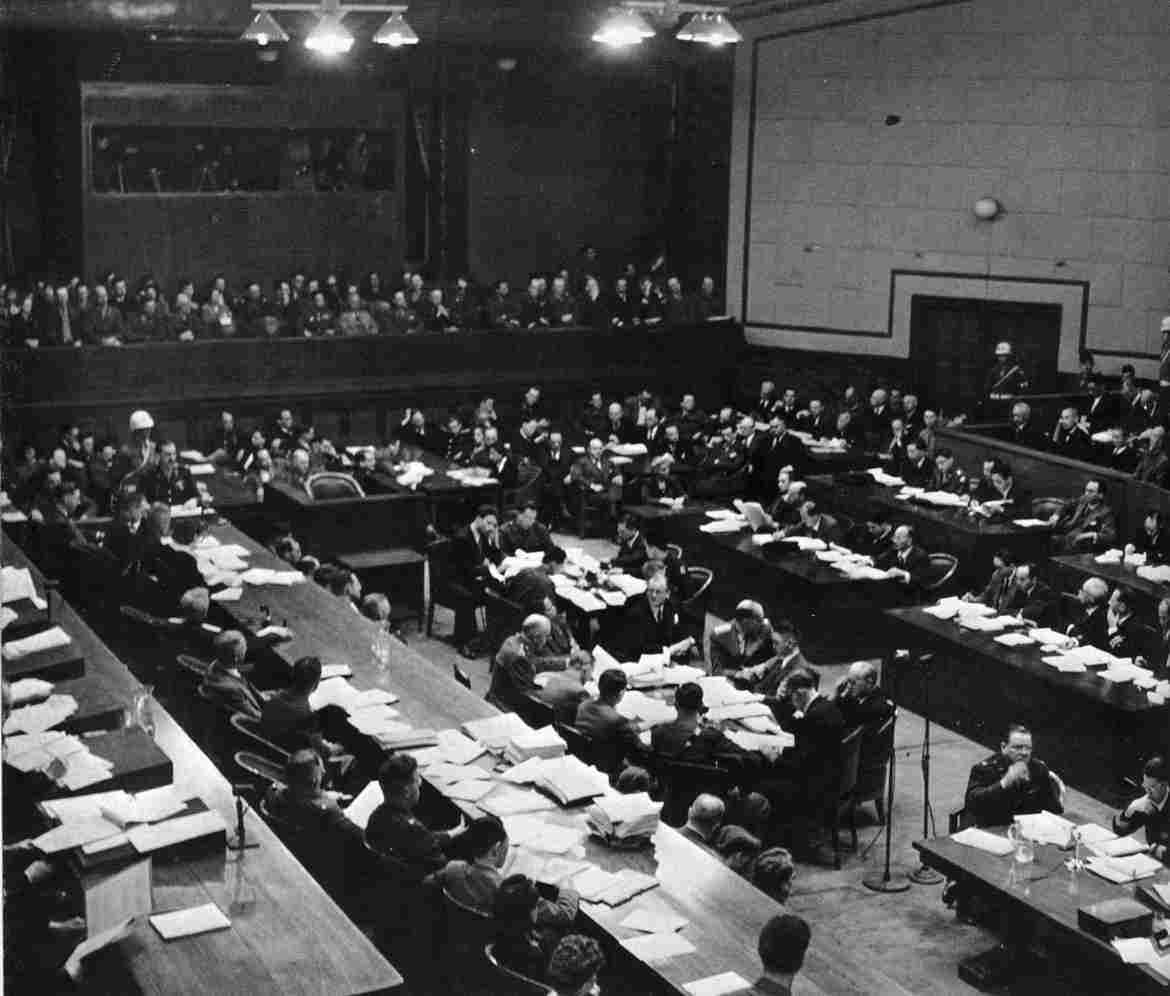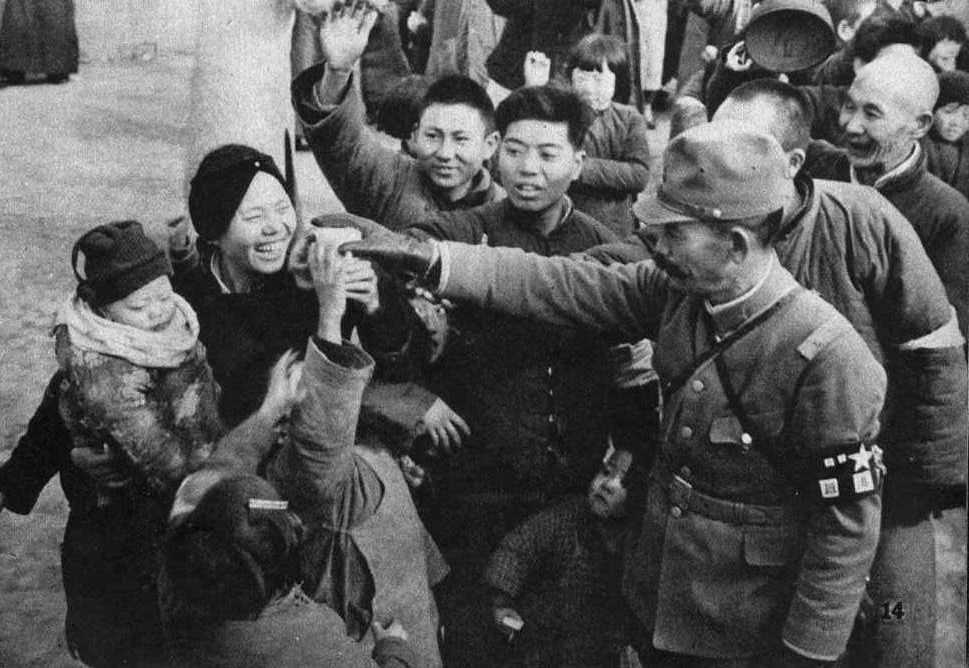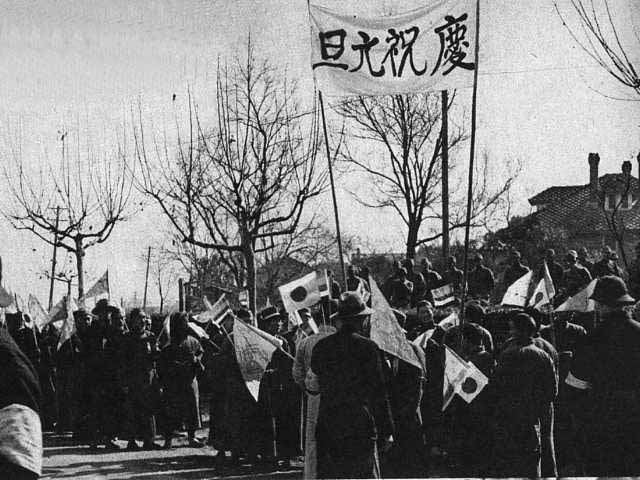
( Tokyo Trial )
Population in Nanking from 1937 - 1938.
At the Tokyo War Crimes Tribunal*, the issue of population in Nanking was a taboo, even though it accused the Japanese army of committing murder of a scale massive beyond imagination.
Defense attorney Michael Levin** pierced the heart of the problem, when he said, “Mr. Brooks calls my attention to the fact that in another portion of the affidavit is contained the statement that 300,000 were killed in Nanking, and as I understand it the total population of Nanking is only 200,000.”
Flustered, William Webb, the presiding justice, replied, "Well, you may have evidence of that, but you cannot get it in at this stage", and suppressed any further discussion of the matter.
 |
| The International Military Tribunal for the Far East ( Tokyo Trial ) |
Therefore, the question of the actual population of Nanking was never addressed at the IMTFE, even while a most bizarre judgement was handed down, in which the (unsubstantiated) number of massacre victims was stated variously as 100 thousand, 200 thousand, 127 thousand, etc. (Stenographic Records of IMTFE Vol.58, 21・8・29)
* International Militaly Tribunal For the Far East, also known as Tokyo Trial
** Levin was defending Okinori KAYA and Teiichi SUZUKI
When there are only 200,000 people, you cannot kill 300,000 people.
This is the official number claimed by China, the number clearly marked at the front of the “Memorial Hall of the Victims in the Nanjing Massacre”, located in Nanking.
One needs to kill ghosts to reach that number.
The most basic question to ask, when you study the “Nanking Incident” is,“How many citizens were in Nanking on Dec.13th, 1937” when the Japanese army attacked and conquered the city?
On Dec.1, 1937, Nanking Mayor Ma Chao-chun ordered all Nanking citizens to move into the “Safety Zone”, a zone for refugees, created and managed by the “International Committee of the Nanking Safety Zone.”
However, the mayor himself, after entrusting rice, wheat, and some policemen to the International Committee, escaped from Nanking, following the path and earlier flight of Generalissimo Chiang-kai shek.
By this time, most upper and middle-class citizens and public servants had fled to the upper of the Yangtze River.
Those left behind were almost all poor, low-class citizens.
First, one needs to grasp the size and area of the city of Nanking.
Although it was the capital of China then, it was very small, compared to huge cities like Shang-hai or Beijing.
I have a map of Nanking issued by China in 1937.
Nanking is a city encircled by high walls, which contains not only residential areas, but also airports, small mountains, and fields for farming.
It is 5 kilometers from west to east, which means that I can walk the widest distance across the city, from Zhongshan Gate to Hanzhong Gate, in approximately an hour.
Similarly, it’s 11 kilometers from Zhonghua Gate in the south, to the most northern Yijiang Gate, or approximately a two-hour walk.
Its total area is about 40 square kilometers, which includes Xiaguan outside the city walls. In other words, Nanking was only two-thirds the size of Manhattan.
Now the self-proclaimed “International Safety Committee”, whose members were non-Chinese and non-Japanese foreigners, formed a 3.8 square kilometers’ “Safety Zone”, roughly equivalent in size to New York’s Central Park, into which they called on all the remaining citizens of Nanking to come and seek refuge.
This Committee handed in or sent out 61 documents to Japanese, American, British, and German Embassies, from day 1 of the entry of the Japanese army on December 13, until February 9 of the following year.
 |
| Dec 20th, 1937, in Nanking.Photo by Asahi News Paper photographer Hayashi.Japanese Imperial army soldier is giving snacks to children and people. |
These documents consist of their complaints to the Japanese army, concerning the army’s misbehavior, security of the city, and food. They were written down daily in large and small detail, and are what one calls primary records, or records written at the time of an incident.
Unfortunately, the Japanese Foreign Ministry had burnt them at the end of the war, but the whole text of these 61 documents are in Documents of the Nanking Safety Zone compiled by Hsu Shuhsi in 1939, and in What War Is: The Japanese Terror in China edited by Manchester Guardian correspondent Harold Timperely. Both were submitted to the Tokyo Trial as “evidence”.
◎ The Documents write three times that the total number of refugees in the Safety Zone were 200,000.
◎ Similarly, Robert Espy, vice-consul of the American Embassy, reported to Washington, as did John Rabe to the German Embassy, that the population of Nanking was 200,000.
◎ However, Lily Abegg, correspondent for the German newspaper Frankfurter Zeitung, who escaped from Nanking just before its fall, wrote an article about her experience in February 1938 issue of Japanese magazine Bungei Shunju. She wrote that by the time of her escape, “Nanking had become a small city, with at most 150,000 people”.
◎ "Life" magazine also reported that about “150,000 Nanking civilians...cowered throughout the siege in a ‘safety zone’.(10th January,1938)
◎ Kuomingtang (KMT) army’s Major Zhang Qunsi, who was taken prisoner by the Japanese army, stated that the Chinese defense force of the city numbered 50,000, while noncombatants were 15,000.
◎ Similarly, Brigadier Major General Lew who was in charge of defending Yuhuatai, and also taken prisoner by the Japanese army, and later promoted to Major General and the headmaster of Nanking Military Academy during Wang Jingwei’s administration, claimed that the population of citizens was “approximately 200,000”.
◎ In addition, General Matsui Iwane, commander-in-chief of the Shanghai Expeditionary Force, wrote on December 20th, "There are 120,000 Chinese in the Refugee Zone, most of them poor".
 |
| Jan.1, 1938. 30,000 citizens gather to celebrate the start of the Nanking Autonomous Committeemanned by Chinese. Photo by Asahi newspaper photographer Kageyama.(The Autonomous Committee eventually overtook the rights of the International Safety Committee to distribute food and allocate living quarters to refugees.This meant the latter also lost its attraction to the refugees by February.) |
Taking all these sources into account, we can state with certainty that the population of Nanking at the end of 1937 was somewhere between 120,000 or 130,000 to a maximum of 200,000.
All sources indicate with certainty that Tang Shengzhi, the head of Nanking Defense Force, had 350 to 500 thousand men under his command.This means that in Nanking, there were a total ofanywhere between a maximum of 250,000 to a minimum of 160,000 refugees and soldiers combined.
Even with total annihilation of both groups of people, the number of victims would be between 160 thousand to 250 thousand.
So WHY the number 300 thousand? Did the Japanese kill ghosts ?
Those who claim so, therefore, try anything they can to increase the number of citizens.
The late professor HORA Tomio of Waseda University claimed in his book,* “when the Japanese army started its attack on Nanking, there were said to be 250,000 to 300,000 citizens in the city” , and that “it is said that nearly 200,000 citizens lived in Nanking after the Japanese army’s mopping up operation” “…which means that 50,000 to 100,000 people were massacred”. However, there is no credibility to his numbers, since he never provided any proof to back it up.
*p.179, Nankin Jiken, Shin-Jinbutsu Ourai-sha)
The WWII Memorial Hall of the Victims in the Nanjing Massacre located in Nanking padded the number of victims and the population of Nanking. The same padding is true of the “Historical Reference Research Committee of the City of Nanking”, which edited The Great Nanking Massacre, translated and published in Japan in 1984. In their book, the editors claim that “according to our research, the population of the Refugee Zone reached 290,000 at maximum. At the end of the period of the massacre, when the Japanese threatened the refugees to leave the safety zone, the (Japanese) claimed that the population was 250,0000. In less than two months, the population had decreased by 40,000. There are of course many reasons for the decrease, but it can be said with certainty that one important reason is that the Japanese had mass murdered the refugees.” They do not, however, tell us where they got the figure 290,000.
Those who support the idea that there was a massacre either avoid the population issue, or line up imaginary numbers and inflate the number of supposed victims.